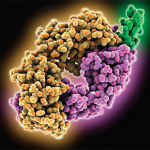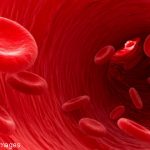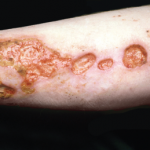A final area of great uncertainty is how maintenance therapy should be handled in patients receiving rituximab for induction of remission. Data presented at the 2010 ACR annual meeting but not yet published indicate that many patients treated with rituximab do suffer relapses, and that continuing rituximab treatment either on a scheduled basis (e.g., two 1,000-mg doses every six months) or after return of B cells and/or a rise in ANCA titer leads to low relapse rate.15,16 However, the optimal strategy for retreatment, including both the regimen and the choice of patients, has not been determined, and more importantly, no comparison to standard maintenance drugs, which are much less expensive and probably have lower risks of infection, has been made. A trial in progress in France (MAINRITSAN) compares rituximab to azathioprine for maintenance of remission.
What I Do…
For patients who receive cyclophosphamide for remission-induction, I follow the standard recommendation to switch to azathioprine or methotrexate between Months 3 and 6, continue maintenance to complete 18 months of treatment, then taper off the maintenance drug—in most patients. In the absence of data comparing 18-month to four-year strategies, I think the available data (e.g., see reference 9) suggest that the rate of first relapse accelerates or is unchanged after discontinuation of the maintenance drug at Month 18, rather than approaching a plateau as one would expect if patients with a tendency to relapse “declare themselves” early. Thus, for patients in whom a relapse might be devastating (e.g., due to tenuous renal function or poor tolerance of glucocorticoids), continuing maintenance therapy indefinitely is reasonable. It is also appropriate for patient preference to play a large role in decision making on this issue.
However, I prefer to use rituximab for remission-induction therapy in most ANCA-positive patients, and particularly those who have previously received cyclophosphamide.4 Since there cannot yet be a strong guideline for maintenance therapy in this setting, I interpret the observational data as follows. For a patient with a first episode of AAV associated with anti-MPO antibodies, I do not use any subsequent maintenance drug (other than prednisone, see below). For a patient with a severe relapse, particularly if it occurs on a maintenance drug, I continue rituximab, either 1,000 mg every four months or 1,000 mg twice every six months indefinitely; however, since the community’s experience with such a strategy only extends for three to four years, I am sure that the prospect of discontinuing therapy will arise among patients who do well for several years. For a patient with a first episode of AAV associated with anti-PR3 antibodies, I usually recommend a second course of rituximab six months after the first, then watchful waiting. Although I do not routinely start azathioprine or methotrexate for maintenance four to 12 months after an initial course of rituximab, I expect that some colleagues do.



